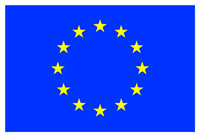WG 2: Emerging nucleic acid targets (beyond the double helix)
Working Group Coordinator: Eva Freisinger, University of Zurich, Switzerland
WG 2 members: Ryszard Adamiak (Poland), Janice Aldrich-Wright (Australia), Miquel Barcelo (Spain), Giampaolo Barone (Italy), Matthias Bickelhaupt (The Netherlands), Sophie Bombard (France), Sofi Elmroth (Sweden), Eva Freisinger (Switzerland), Mike Hannon (UK), Per Lincoln (Sweden), Jens Müller (Germany), Antonio Paulo (Portugal), Janez Plavec (Slovenia), Laura Rodríguez (Spain), Roland Sigel (Switzerland), Marie-Paule Teulade-Fichou (France), Eugenio Vasquez (Spain), Ramon Vilar (UK)
Topic: Based on the currently accepted mode of action for the well-established anticancer drug cisplatin, most research with respect to novel metal-based drugs has been (and still is being) devoted to investigating their interaction with the DNA double helix. This approach neglects the fact that functional DNA, i.e. DNA while it is being processed, often adopts different structural motifs (e.g. three-way junctions, four-way junctions, or tetrastranded helices). It is therefore likely that by specifically targeting these DNA conformations, metal complexes can be developed that serve as metallo-drugs with entirely new modes of action and potentially leading to new therapies for cancer and other diseases.
To give an example: the 3' ends of eukaryotic chromosomes known as telomeres typically contain singlestranded guanine-rich overhangs that are in principle able to adopt a tetrastranded structure. In somatic cells, telomeric DNA progressively shortens during each round of replication as a result of the inability of DNA polymerase to fully replicate single strands. In more than 80% of all tumour cells, the length of the telomeric DNA is maintained by the enzyme telomerase, leading to "immortal" cells, whereas in healthy cells the enzyme is inactive. Telomerase requires the telomeric DNA to be single-stranded. Hence, the development of metal complexes capable of selectively stabilizing a quadruplex structure is expected to lead to a novel and selective anti-cancer therapy.
In addition, RNA is emerging as an important new target for metal-based drugs. For a long time, RNA was considered an intermediate carrier of genetic information only. However, during the past few decades knowledge has been gained showing that RNA is of utmost importance also in a variety of other biological aspects, e.g. as a catalyst (ribozymes, Nobel Prizes in 1989 and 2009) or in regulating gene expression (RNA interference, Nobel Prize in 2006; riboswitches). Hence, the development of metallo-drugs that specifically target functional RNA is a highly promising and topical area of research. In particular, riboswitches (i.e. small, highly conserved elements within the untranslated regions of mRNA that are capable of binding to small-molecule metabolites and concomitantly regulating gene expression) are an interesting target in the context of developing new classes of antibiotics. As riboswitches are found exclusively in prokaryotes (with a single exception), interfering with these riboswitches by means of metallo-drugs automatically means that only bacteria will be targeted.
Within this WG, metal complexes that specifically interact with nucleic acids of unusual conformation will be developed, and their interaction with nucleic acids will be characterized.

 COST is supported by the EU Framework Programme Horizon 2020
COST is supported by the EU Framework Programme Horizon 2020